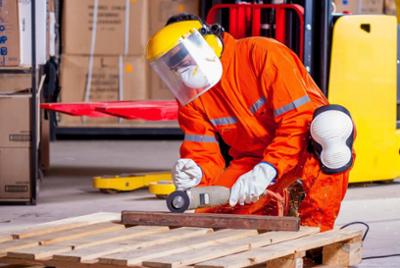

Goodbye to uncomfortable protective equipment
Although some PPE used to provide high levels of protection, it could also be a little uncomfortable at times. Therefore, ASEPAL member companies have made great efforts to develop more modern, ergonomic and comfortable protective equipment that can be worn throughout the working day without causing any discomfort.
Javier Díaz Alonso, ASEPAL's technical manager, explains that personal protective equipment (PPE) is essential to ensure the health and safety of people exposed to any risks that have not been reduced or totally eliminated in different sectors and activities. In this context, "the events of recent years and those currently unfolding have changed our perception of our society and our environment. And, of course, the companies belonging to ASEPAL have been leading the way in the development of PPE over the years, making a firm commitment to ergonomics, sustainability and the circular economy".
The technical manager of the Association of Personal Protective Equipment Companies points out that the protection of people against risks means that PPE must be worn for the entire duration of exposure to the risk. "Therefore, the companies that make up ASEPAL have made a considerable effort to progress from PPE which, although reaching high levels of protection, could be somewhat uncomfortable on certain occasions, to modern equipment with a degree of development that makes it possible to reach levels of ergonomics and comfort that are high enough to ensure that wearing PPE throughout the entire working day causes no discomfort".
Social and environmental commitment
Meanwhile, the firm commitment of ASEPAL's member companies to society and the environment is bringing about a second revolution in the PPE sector. "The enlightening discussions taking place in our internal working groups highlight the efforts being made by companies to minimise the environmental impact, not only of the equipment they sell, but also of their packaging and wrapping. The companies that belong to our association are making a considerable investment in material resources, human capital and process redesign that will make them benchmarks in terms of circular economy and sustainability".
Díaz states that "If there is anything of which we can be absolutely certain about what the future holds for the world of workwear in terms of personal protection, it will be that we will see more and more durable PPE with a higher content of raw materials from recycled sources, with less impact from the packaging that preserves it, etc.". But we will also see "companies that have made a considerable effort to minimise their carbon footprint and water footprint, and that are modifying all necessary processes to contribute to achieving the high sustainability requirements demanded by society".





